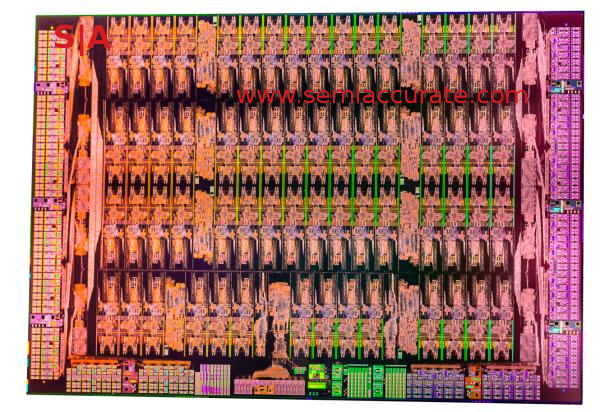NVIDIA, though, is more aggressive about pointing to big performance increases over CPU-only platforms, more on the order of 5X to 30X and beyond. For its new K20X Tesla part announced earlier today, the GPU-maker is claiming a 7X performance advantage over to a Sandy Bridge Xeon. Although that makes it seem like the GPU competition is three times faster than Knights Corner, the NVIDIA comparison is GPU-to-CPU, while Intel prefers to match its coprocessor against two Xeons.
Nevertheless, NVIDIA's K20 does top Knights Corner in both raw performance and performance per watt. The 235 watt K20X offers 1.31 double precision teraflops, while the 225 watt 5110P, at 1.011 teraflops, delivers 300 gigaflops less. Advantage NVIDIA.
It appears to be even more skewed for single precision FLOPS, where the K20X offers three times its double precision performance; for the Knights Corner, single precision appears to be just twice that of its double precision results.

